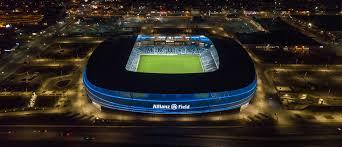 I. Introduction
I. Introduction 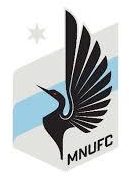
The 2020 season marks the fourth year Minnesota United Football Club (“MNUFC”) will compete in Major League Soccer (“MLS”). MNUFC entered the MLS as the 22nd franchise when it began League play in the 2017 season.[1] In the last three seasons, MNUFC has become one of the best clubs in MLS’s Western Conference. MNUFC finished the 2019 MLS season with a 15-11-8 record, earning a 4th place finish in the Western Conference.[2] MNUFC hosted a first round playoff game at Allianz Field but was unfortunately knocked out of the playoffs by the LA Galaxy by a score of 2-1.[3] While MNUFC’s 2019 season ended not as the Club anticipated, the Club is excited for what is to come in the future, as it has set the standard for expansion clubs entering into MLS. This article will explore the history of the Club, including the Club’s entrance into MLS, the creation of Allianz Field, and the real estate development that has accompanied the creation of the stadium.
a. Beginning 
The history of professional soccer in Minnesota starts several decades ago. In 1976, a new ownership group relocated the North American Soccer League’s (“NASL”) Denver Dynamo franchise to Minneapolis.[4] The team was branded the Minnesota Kicks (“Kicks”) and competed for six seasons in the NASL before being dissolved.[5] The Kicks enjoyed some success, and was well received and supported in Minneapolis. During the six seasons in the NASL, the Kicks averaged 24,381 fans per home game.[6]
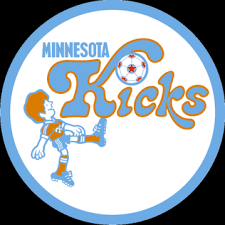 Following the dissolution of the Kicks, professional soccer returned to the Twin Cities a few years later with the relocation of the Fort Lauderdale Strikers.[7] Renamed the Minnesota Strikers (“Strikers”), the Club played in the 1984 NASL season averaging 14, 462 fans.[8] The NASL folded following the 1984 season and the Strikers moved into the Major Indoor Soccer League (MISL) for the next four seasons.[9] The Strikers formally folded after the 1988 MISL season.[10]
Following the dissolution of the Kicks, professional soccer returned to the Twin Cities a few years later with the relocation of the Fort Lauderdale Strikers.[7] Renamed the Minnesota Strikers (“Strikers”), the Club played in the 1984 NASL season averaging 14, 462 fans.[8] The NASL folded following the 1984 season and the Strikers moved into the Major Indoor Soccer League (MISL) for the next four seasons.[9] The Strikers formally folded after the 1988 MISL season.[10]
b. Minnesota Thunder and Buzz Lagos 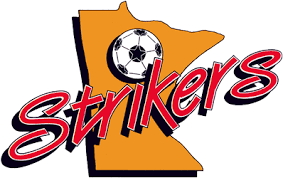
While these early attempts at professional soccer definitely played a role in growing the game in Minnesota, the story of MNUFC really begins in 1990. In 1990, Buzz Lagos (“Lagos”), a local soccer player and coach got together a group of soccer enthusiasts and founded the Minnesota Thunder (“Thunder”), a semi-professional soccer team.[11] Lagos taught at the St. Paul Academy and served as a soccer coach.[12] The Thunder was started as a way to provide games for Lagos’s sons and their former teammates during the summers away from their college programs.[13] Lagos and the other founders used the little money they had to support the Club, as ticket sales and smalltime sponsors were just enough to keep the Club afloat.[14] The long term goal of the group was to achieve professional status for the Thunder.[15]


In 1994, the Thunder founder’s dreams were realized when the Thunder joined the U.S. Interregional Soccer League (“USISL”) and achieved professional status.[16] The Thunder were relatively successful, reaching the USISL finals three times; 1995, 1998, and winning the championship in the 1999 season.[17] The team was led by stars Manny Lagos, Amos McGee, and Tony Sanneh; with Manny Lagos and Amos McGee rejoining MNUFC in technical roles during the inaugural MLS season.[18] From 1995 -2000, MNUFC saw some of its top players moving to the MLS.[19] For the next decade, the Thunder continued to operate throughout different leagues, primarily in the second division of North American soccer.[20]
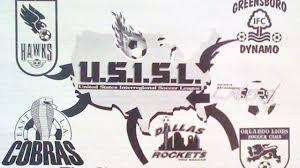
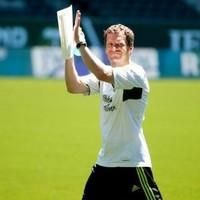
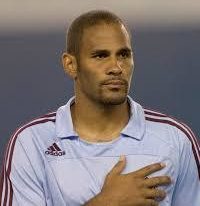
c. Minnesota Stars 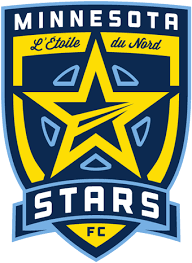
The Thunder enjoyed some exciting seasons during the 2000s, making some historic runs in the U.S. Open Cup, a competition where MLS and lower league sides play throughout their respective seasons.[21] Although the team was somewhat successful from 2000-2009, the Thunder officially folded as an organization briefly in 2009.[22] The team was resurrected in 2009 by the National Sports Center (“NSC”), and was renamed the NSC Minnesota before changing its name to the Minnesota Stars (“Stars”). [23] The team was coached by Manny Lagos and competed in the USL during the 2009 season before joining the newly reformed NASL in 2010.[24] As the name suggests, the NSC is a sports complex outside of the Twin Cities in Blaine, Minnesota.[25] The NSC has a small stadium that allowed for several thousand fans to attend Stars’ home games.[26]
In 2011, the Stars competed in the inaugural season of the new NASL, ultimately winning the championship over the Fort Lauderdale Strikers.[27] NSC couldn’t afford to continue running the Club and the NASL took control of the team during the 2011 season.[28] The NSC did not have the financial resources to maintain direct operation or ownership or meet the League’s ownership requirements, so the NASL pledged to own the team for three years while a new ownership group was sought.[29]
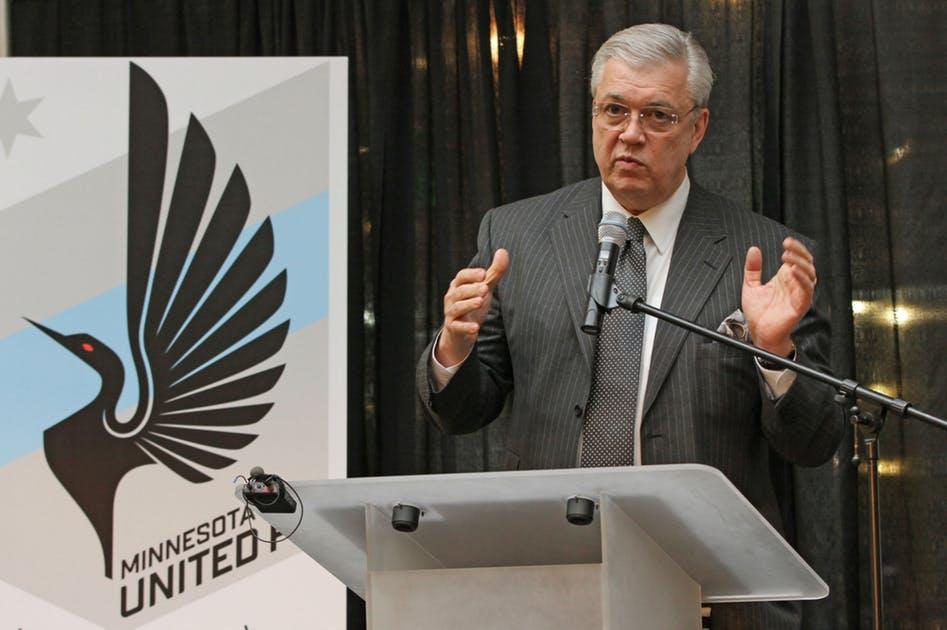
In 2012, the NASL decided the League could no longer run the club and sought new ownership for the team.[30] If a new owner could not be found, the team was informed it would fold following the season.[31] David Downs, the commissioner of the NASL in 2012, reached out to Bill McGuire (“McGuire”) about potential ownership.[32] At first, McGuire was not interested in buying the team, but reconsidered after the 2012 NASL season had ended.[33] McGuire when asked about purchasing the team responded:
Nobody wanted to be involved. The heritage of the sport in this city, the demographics of our population, and you look at the community and what its interests are, I could not see letting that go away [. . .] And once we stepped in, it was, ‘OK, now let’s make this into something.[34]
Under McGuire’s new ownership, the Stars went through a total overhaul, rebranding the entire image of the Club, on and off the field. His vision for the Club’s future was growth, with the eventual goal of entering the MLS at some point.
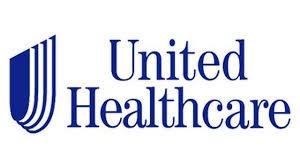
d. The McGuire Era and MNUFC
 When McGuire took over as President of United HealthCare in 1989, he had a vision for the Company on expansion much like when he purchased MNUFC.[35] McGuire was a former lung and heart specialist doctor, who was born in New York.[36] McGuire left practicing medicine and took a job with Peak Health Plan in 1984.[37] Peak Health Plan was bought by United Health Care in 1988 and McGuire assumed a senior role with United.[38] He envisioned United HealthCare as a global HMO and reimagined the way the Company went after customers and clients.[39] In his short time as President, McGuire evolved United Healthcare into a national conglomerate, tripling the Company’s net income to almost $33.9 million in 1990.[40] McGuire had a clear vision and became the Chief Executive as the company expanded.[41] By 1991, McGuire managed United HealthCare onto the New York Stock Exchange and generated over $75 million in income.[42] Through McGuire’s leadership, United HealthCare became much more than it was, just as with MNUFC.
When McGuire took over as President of United HealthCare in 1989, he had a vision for the Company on expansion much like when he purchased MNUFC.[35] McGuire was a former lung and heart specialist doctor, who was born in New York.[36] McGuire left practicing medicine and took a job with Peak Health Plan in 1984.[37] Peak Health Plan was bought by United Health Care in 1988 and McGuire assumed a senior role with United.[38] He envisioned United HealthCare as a global HMO and reimagined the way the Company went after customers and clients.[39] In his short time as President, McGuire evolved United Healthcare into a national conglomerate, tripling the Company’s net income to almost $33.9 million in 1990.[40] McGuire had a clear vision and became the Chief Executive as the company expanded.[41] By 1991, McGuire managed United HealthCare onto the New York Stock Exchange and generated over $75 million in income.[42] Through McGuire’s leadership, United HealthCare became much more than it was, just as with MNUFC.
Following McGuire’s purchase and change of ownership, the Club President Nick Rogers hired Zeus Jones to overhaul the Club’s design.[43] Zeus Jones came up with the new crest as the team was renamed the Minnesota United Football Club.[44] The crest includes: a loon, Minnesota’s state bird; two gray stripes representing the iron range of Minnesota; the center blue stripe represents the Mississippi River; and a star characterizing Minnesota’s motto “L’Etoile du Nord.”[45] The crest and overall rebranding of the Club was exactly what MNUFC needed. McGuire said he wanted to make the Club into something, and that is just what he did. It’s no surprise either, as McGuire has been making things happen for a long time in Minneapolis.

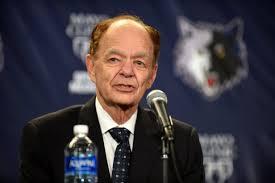
The rebranding of MNUFC was unveiled at a ceremony on March 5, 2013.[46] The reason for the new name was to unite all aspects of the game of soccer and its connection to Minnesota.[47] Along with McGuire, MNUFC the ownership group had direct ties to Minnesota and professional sports in the Twin Cities.[48] Jim Pohlad (“Pohlad”), owner of the Minnesota Twins, and Glen Taylor (“Taylor”), owner of the Minnesota Timberwolves, are part of McGuire’s ownership group.[49]
The sale to McGuire has provided the Club with a new identity and allowed it to solidify its standing in the Minnesota sports scene.
II. Expansion into the MLS
The newfound stability provided by McGuire led to big changes for the franchise in 2015. On March 25, 2015 the MLS formerly announced that the City of Minnesota would be receiving an expansion franchise.[50] This announcement was what Buzz Lagos and some of the other Minneapolis grassroots soccer supporters dreamed would happen one day. While Minnesota did not achieve MLS status overnight, the promotion into the League was somewhat unique in nature.
a. Ownership Group
While McGuire is the face of MNUFC ownership, there are many other influential investors who made MLS soccer a reality in Minnesota. Taylor, founder of Taylor Corp., a printing firm has done over $2.2 billion in sales since 1975.[51] Taylor owns stakes in the Minnesota Timberwolves, Lynx and MNUFC. Another member of the ownership group is Pohlad, who is the Executive Chair of the Minnesota Twins.[52] He has been with the Twins for 34 years, with his primary duties focusing on providing direction from the Pohlad family, who are owners.[53] Wendy Nelson Carlson, another owner, has served in governance and executive positions for a number of different companies. Most notably, she was vice president of real estate for Carlson Restaurants.[54] Her primary focus was to acquire real estate and invest in the furtherance of the T.G.I. Fridays’ brand.[55] There are a few more minority owners of MNUFC, but these three and McGuire are the main faces of the group.

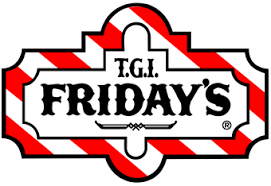
While Bill McGuire has been the public face of the 16-person Minnesota United ownership group, behind the scenes there is a venerable who’s who of Minnesota business titans, a group that MLS Deputy Commissioner Mark Abbott said contains “the establishment of this community.” McGuire said that local commitment has been crucial as the group has looked at the team and Allianz Field as “something that makes the community better, something that reflects those community values and making sure we’re placing importance on things that will make a difference in the future — it’s not just ‘wow, it’d be fun to own a soccer team.’”
Although the team did not make available the specific breakdown of how much each investor owns or how much they paid to be a part of the group, this list represents the majority of the team’s ownership group. Glen Taylor and the Pohlad family came on board as part of the team’s move to MLS in 2016, the same year as the ceremonial groundbreaking for Allianz Field.[56]
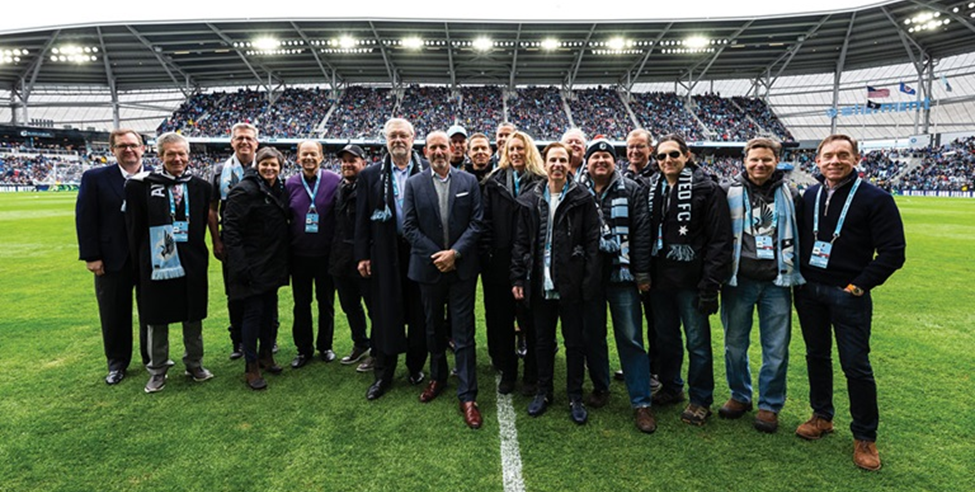
- Bill McGuire, Former chairman and CEO of UnitedHealth Group
- Glen Taylor, Minnesota Timberwolves owner
- The Pohlad family, Minnesota Twins owners
- Wendy Carlson Nelson, Chairwoman of the Carlson Family Foundation, and member of family that founded business and travel company CWT, formerly known as Carlson
- Matt Mithun, Family founded the advertising and marketing firm Mithun
- Jeremy Jacobs Jr., Delaware North Co-CEO
- The Mortenson Family, Operate eponymous construction company, which was the general contractor of Allianz Field
- The Binger Family, Represented by Erika Binger, who sits on the board of the McKnight Foundation, one of the country’s largest family foundations, which was started by her great-grandfather William McKnight, the former chairman of 3M
- Justin Kelly, CEO of Winslow Capital, a Minneapolis-based investment firm
- Ben Grossman, Strategic consultant and head of his advisory and investment practice, Selhurst Media Ventures[57]

b. MLS Entrance Fee ($ Expansion Fee)
MLS has rapidly expanded as well as seen its franchise fee dramatically increase over the years. What follows is a history of the creation of MLS teams along with the franchise fee paid.
| TEAM | YEAR (play date) | FRANCHISE FEE |
| NY Red Bulls | 1996 – NY/NJ MetroStars | $5 million |
| Sporting Kansas City | 1996 – Kansas City Wizards | $5 million |
| Colorado Rapids | 1996 | $5 million |
| Columbus Crew SC | 1996 | $5 million |
| New England Revolution | 1996 | $5 million |
| San Jose Earthquakes | 1996 – San Jose Clash | $5 million |
| Chicago Fire | 1998 | $5 million |
| LA Galaxy | 1996 | $5 million |
| D.C. United | 1996 | $5 million |
| Portland Timbers | 2011 | $35 million |
| Montreal Impact | 2012 | $40 million |
| Vancouver Whitecaps FC | 2011 | $35 million |
| Houston Dynamo | 2006 | (not expansion – team move) |
| Real Salt Lake | 2005 | $10 million |
| FC Dallas | 1996 – Dallas Burn | $5 million |
| Toronto FC | 2007 | $10 million |
| Seattle Sounders FC | 2010 | $30 million |
| Philadelphia Union | 2010 | $30 million |
| Orlando City SC | 2015 | $70 million |
| Minnesota United | 2017 | $100 million |
| New York City FC | 2015 | $100 million |
| Atlanta United | 2017 | $70 million |
| FC Cincinnati | 2019 | $150 million |
| Los Angeles FC | 2018 | $110 million |
| Inter Miami CF | 2020 | $25 million |
| Nashville SC | 2020 | $150 million |
| Austin FC | 2021 | $150 million |
| St. Louis | 2022 | $200 million |
| Sacramento | 2022 | $200 million |
| Charlotte | 2021 | $325 million |
| Tampa Bay Mutiny | 1996 (defunct 2002) | $5 million |
In 2007, Toronto entered the MLS as the 12th team paying a $10 million entrance fee.[59] Just ten years later, following growth of the League, the MLS had significantly upped the cost for a new franchise. MNUFC and McGuire’s ownership group had to pay a $100 million entrance fee to become the 22nd team to join MLS in the 2017 season.[60] The fee strictly covers the teams’ entrance into the League, and did not cover anything further.[61] Don Garber (“Garber”), MLS Commissioner, noted that McGuire’s ownership group would need at least $300 million when coaching salaries, player salaries, stadium costs, and other franchise expenses are added into the equation.[62]
c. New Stadium
 When the announcement was made about Minnesota’s MLS expansion, McGuire and the other owners announced plans to build a new soccer specific stadium in the Twin Cities.[63] This announcement for a new stadium was a major reason Minnesota was awarded an expansion franchise by the MLS.[64] MNUFC announced its plans to build a soccer specific stadium in St. Paul that would be 100% privately financed.[65]
When the announcement was made about Minnesota’s MLS expansion, McGuire and the other owners announced plans to build a new soccer specific stadium in the Twin Cities.[63] This announcement for a new stadium was a major reason Minnesota was awarded an expansion franchise by the MLS.[64] MNUFC announced its plans to build a soccer specific stadium in St. Paul that would be 100% privately financed.[65]
The ownership group made constructing a new soccer specific stadium for MNUFC a priority.[66] The new stadium’s home would be in St. Paul at the Snelling-Midway site, located in the Midway neighborhood.[67] The site had multiple uses throughout its history including a bus parking lot and streetcar maintenance yard.[68] The location is attractive for several reasons. One, the stadium is located between Minneapolis and St. Paul.[69] This location echoes back to the team name, which references the bond that the Twin Cities encompass through the team’s crest shape and stripes.[70] Second, there is access via the interstate highway that runs along the southern boundary of the site as well as public transportation options, including bus and rail.[71]
The new facility was privately funded entirely.[72] The final price of the project is reported to cost approximately $250 million.[73] When plans were first announced, the estimated cost was closer to $150 million, but that has increased in more recent reporting of the cost of the stadium project.[74] Even though the Team privately financed the construction, it sought a tax exemption for the project.[75]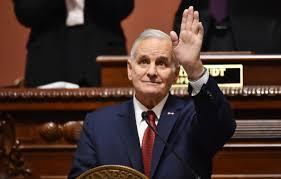
The Team argued that the tax break was needed in order for the project to be viable.[76] Minnesota Governor Mark Dayton finally granted the tax exemption in May 2017 through special legislation for certain property and sales taxes.[77] These exemptions help ease the burden for the Team that has taken on the full price tag for the construction.[78] Different types of tax breaks have been common in stadium construction.[79] Every stadium project in Minnesota since 1998 has received this property tax breaks, including Target Field, TCF Bank Stadium, US Bank Stadium, and Xcel Energy Center, and the University of Minnesota football stadium.[80]
 In the soccer world the two most important sponsorship deals for a Club are the stadium naming rights sponsor and the jersey sponsor. MNUFC found partners for both in 2017.[81] MNUFC found a local company, Target, to sponsor the jersey.[82] Target additionally committed to the MLS by signing on as a League partner.[83] That deal was announced in early January of 2017.[84] On July 27, 2017, the Team announced the name of the new stadium, Allianz Field.[85]
In the soccer world the two most important sponsorship deals for a Club are the stadium naming rights sponsor and the jersey sponsor. MNUFC found partners for both in 2017.[81] MNUFC found a local company, Target, to sponsor the jersey.[82] Target additionally committed to the MLS by signing on as a League partner.[83] That deal was announced in early January of 2017.[84] On July 27, 2017, the Team announced the name of the new stadium, Allianz Field.[85]
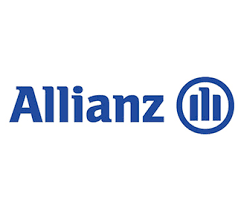

Allianz is no stranger to stadium sponsorship, particularly soccer stadiums, and already has the company name on several prominent buildings throughout the world.[86] These include Allianz Arena, home of Bayern Munich, one of the most well-known German clubs in the world.[87] Walter White, President and CEO of Allianz Life, said that “as a global company with a long tradition of stadium sponsorship and strong connection to soccer around the world, Allianz is proud to join Minnesota United FC in bringing this facility to soccer fans in our great state.”[88] The details of the deal are not public but it is likely a long-term deal worth several million dollars a year. Recently, other MLS franchises including Los Angeles and San Jose have announced stadium naming rights deals that run for ten years or longer for several million dollars per year.[89]
 The most important characteristic of the stadium is that is designed specifically for soccer. MUNFC will be the primary tenant.[90] This is an open-air stadium with a playing surface of natural grass.[91] The stadium will have an intimate atmosphere.[92] The farthest seat from the playing surface will be a mere 125 feet.[93] The stadium is set to hold 19,400 seats with expansion possible to add approximately another 6,000 seats.[94] In addition, it will have twenty-two suites and four hospitality areas.[95]
The most important characteristic of the stadium is that is designed specifically for soccer. MUNFC will be the primary tenant.[90] This is an open-air stadium with a playing surface of natural grass.[91] The stadium will have an intimate atmosphere.[92] The farthest seat from the playing surface will be a mere 125 feet.[93] The stadium is set to hold 19,400 seats with expansion possible to add approximately another 6,000 seats.[94] In addition, it will have twenty-two suites and four hospitality areas.[95]
Allianz Field is one of the most unique stadiums in North America.[96] There are two reasons for this. First, the outside of the stadium will be translucent.[97] The outside will be a “PTFE laminate mesh skin” and will feature an LED lighting system.[98] This exterior is coincidently quite similar to Bayern Munich’s home stadium.[99] This setup allows for the stadium to be illuminated in different ways. As evidenced by Allianz Arena, this can be quite striking, particularly at night.[100]
 The stadium will also feature a standing supports section, located at one end of the playing surface.[101] This is a feature that has been implemented at other stadiums, such as Orlando City’s new stadium, but the one in Minnesota will create “the most imposing wall of support in the MLS.”[102] This section will be able to accommodate 2,800 fans.[103] Early plans for the section had the stands on a thirty-five degree slope, the most severe in MLS.[104] The Dark Clouds and True North Elite will likely populate this section.[105] They are two supporter groups that have been embraced, present and incorporated into many of the press conferences held by the Team over the last few years.[106]
The stadium will also feature a standing supports section, located at one end of the playing surface.[101] This is a feature that has been implemented at other stadiums, such as Orlando City’s new stadium, but the one in Minnesota will create “the most imposing wall of support in the MLS.”[102] This section will be able to accommodate 2,800 fans.[103] Early plans for the section had the stands on a thirty-five degree slope, the most severe in MLS.[104] The Dark Clouds and True North Elite will likely populate this section.[105] They are two supporter groups that have been embraced, present and incorporated into many of the press conferences held by the Team over the last few years.[106]

Allianz Field By The Numbers (Sports Business Journal, April 15-21, 2019)[107]
- 250 million – cost to build Allianz Field
- 9 million – Minnesotans within 30 miles of Allianz Field
- 675,229 – gallon reservoir for recycled water from the stadium’s canopy
- 324,000 – watts of sports lighting on the field
- 296,193 square feet – stadium footprint
- 88,000 – square feet – PTFE fabric
- 19,400 – seating capacity
- 2,800 – seating capacity in the Wonderwall supporter’s section
- 1,400 – light fixtures on the PTFE facade
- 400 – bicycle rack spots
- 360 – LED sports lights
- 280 – ADA and companion seats
- 192 feet – overall length of the bar in the Brew Hall
- 125 feet – farthest seat from the pitch
- 120×75 – pitch dimensions
- 100 – percent privately funded
- 96 – taps in the Brew Hall
- 5 miles – heating pipe installed under the pitch
- 25 – suites
- 17 feet – closest seat to the pitch
- 4 hospitality clubs
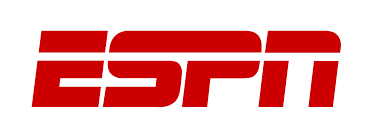
Allianz Field is ‘best stadium experience’ in MLS, according to ESPN:
It’s only been open for four months and already Allianz Field has won the hearts and minds of soccer fans nationwide.
The 19,400-capacity home of Minnesota United has been showered with praise since opening its doors in April, with ESPN the latest to jump on the bandwagon.
It named Allianz Field as having the “Best Stadium Experience” in this article explaining how to “Experience MLS like a die-hard fan.”
So why so good? Well it helps to have a 4,000-square-foot Brew Hall at one end of the ground, a place of congregation for fans before conducting their weekly worship.
ESPN also gives a shout out to the Dark Clouds and True North Elite fan groups, who are instrumental in leading the chants that gives Allianz Field such an intimidating, raucous atmosphere.
And no feature on the crowd experience at Allianz Field is complete without a reference to “Wonderwall” in the event of a United win.
“It’s a captivating scene,” ESPN notes of the Loons’ anthem, “one that has lured the area’s soccer fanatics to St. Paul.” [108]

In the article, Brew Hall to bluegrass: 10 Things About Minnesota United’s Allianz Field, Jillian Sakovits sums up the best features of Allianz Field as:

- The Wonderwall: MNUFC’s 2,800-capacity, standing-room-only supporters section is the steepest grade allowed at 34.8 degrees.

- The Loon! The Minnesota United crest is everywhere, uniquely intertwined throughout the stadium. That detail, combined with the baby blue seats, is striking.

- Brew Hall: With 96 beer taps, local food and garage doors that open to the concourse, what’s not to love? This beer garden-inspired restaurant and bar also has non-gameday hours, and will be open for special events like watch parties (Women’s World Cup, anyone?!) The big, big screen sits just across the pitch.
PS: I love the commitment to their local small business owners. In addition to food you would expect at a stadium like hot dogs, popcorn and pretzels, Allianz Field will showcase the diversity of culture and cuisine in Minnesota. Whether a fan’s favorite is a Freschetta pizza, Somali flavors from Afro Deli, traditional nachos from Los Ocampo or a chicken tikka masala rice bowl from Hot Indian, they have it.
- What is with the analog clock? That is what I said, too, before learning about the story: It’s a very cool way to honor the NASL days of MNUFC. There was an analog clock and manual scoreboard at their old home, the National Sports Center in Blaine, Minnesota. The idea came from members of the Dark Clouds supporters’ group who journeyed to the 2006 World Cup and saw the old analog clock at FC St. Pauli’s (get it?) Millerntor-Stadion. The clock in the center keeps time, while the numbers on either side keep score, old-school style.

- There really isn’t a bad seat in the house! The closest seat to the field is 17 feet away; the farthest, just 125 feet. While this sounded cool, I wanted to see what that means. I scoured for the most distant seat, climbed up to take a look – and it was, in fact, still right near the action. The view from close up isn’t bad, either.
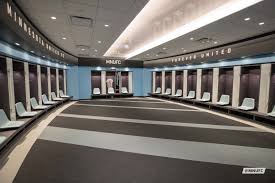
- Locker room: So fresh, so clean. MNUFC made sure the players were the first people to ever see their new home, via a private tour in early 2019.
- The grass: As I approached MSP by plane, I could spot this patch of green grass from 20,000 feet up. The Kentucky bluegrass surface looks stunning, and with 27.5 miles of heating pipe under the pitch, it will be that way year-round.
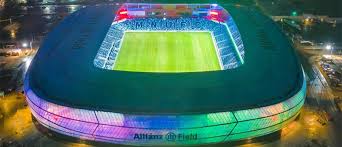
- It glows! The PTFE exterior skin is incredible. This is the first time it has ever been used on a stadium; it can light up in all colors with varying moving, flowing light patterns. Drawing inspiration from Minnesota’s abundant waters and the Northern Lights that fill its skies, Allianz Field creates a stunning environment, inside and out, for the sport.
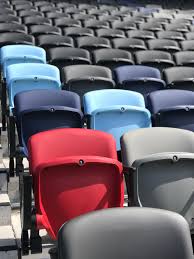
- The Red Seat: Every match, this seat will be reserved for a very special guest. Stay tuned for more on that coming later this week from @MNUFC!
- “The Why” The fans! The team & St. Paul based stadium was inspired by the diversity of the fan base. This wall at the entrance pays tribute to them.[109]
III. Comparison to other MLS Clubs
a. Entrance into MLS and MLS Stadiums
While Allianz Field is truly a work of art, there are some doubts to how well it actually is built to suit MNUFC. During this past season, Minnesota has finally been able to play in the newly finished stadium. While MLS Commissioner Garber has praised MNUFC and how they have gone about entrance into the League, he also stated: “I wish the stadium wasn’t 19,000 and that it was 27,000 because I think at some point we are going to be thinking of how do we make the stadium bigger. … I think we are going to be dealing with that in a number of different markets.”[110] On its face, Garber is clearly not disappointed in the design or finished product of this new stadium, but has any concern a league commissioner would have in a growing league. While the stadium can increase its capacity by at least 6,000 seats, MNUFC CEO Chris Wright believes this would cost a minimum of $40 million.[111] While Allianz Field has only been open less than a year, it is clear MNUFC fans are dedicated as the team averaged the fifth best attendance in the 2018 MLS season.[112] MNUFC played its first two seasons at TCF Bank Stadium, the University of Minnesota’s football stadium.[113] Here, MNUFC averaged 23,902 fans in 2018, had over 35,000 fans for its first MLS game in 2017, and finished the 2018 season in front of over 52,000 fans.[114] In 2019, stadium attendance was ranked 10th with a total attendance of 335,291, which averages to 23,902 per game, and that made them 10th in the League for attendance.[115] I think these numbers are a testament to the MLS and Garber, who has awarded franchises to cities with a strong, consistent support for professional soccer and are willing to build soccer specific stadiums.
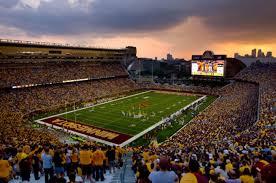 Across the League, the trend for new franchises seemingly includes a plan for soccer specific stadiums to be built during the bidding process for a team or once a franchise is awarded. For example, take F.C. Cincinnati, who played their inaugural season in the MLS this past year. The MLS choose Cincinnati as an expansion franchise based entirely on their attendance record in the USL and the commitment to build a new stadium.[116] Cincinnati joined the USL in the 2016 season and immediately was setting attendance records in the second tier of professional soccer in the United States.[117] Cincinnati averaged over 30,000 fans three times in its first season, and had sold over 17,000 season tickets for its 2018 campaign. Cincinnati has been playing in Nippert Stadium, home of the University of Cincinnati Bearcats football team until their new $250 million stadium in the West End of the city is completed. This stadium’s capacity will be around 25,000-27,000 seats, which might not be enough as their average attendance this past season was 27,600 fans.[118] F.C. Cincinnati seems to have followed MNUFC’s blueprint, and both clubs are settling into the League focusing on long term stability.
Across the League, the trend for new franchises seemingly includes a plan for soccer specific stadiums to be built during the bidding process for a team or once a franchise is awarded. For example, take F.C. Cincinnati, who played their inaugural season in the MLS this past year. The MLS choose Cincinnati as an expansion franchise based entirely on their attendance record in the USL and the commitment to build a new stadium.[116] Cincinnati joined the USL in the 2016 season and immediately was setting attendance records in the second tier of professional soccer in the United States.[117] Cincinnati averaged over 30,000 fans three times in its first season, and had sold over 17,000 season tickets for its 2018 campaign. Cincinnati has been playing in Nippert Stadium, home of the University of Cincinnati Bearcats football team until their new $250 million stadium in the West End of the city is completed. This stadium’s capacity will be around 25,000-27,000 seats, which might not be enough as their average attendance this past season was 27,600 fans.[118] F.C. Cincinnati seems to have followed MNUFC’s blueprint, and both clubs are settling into the League focusing on long term stability.
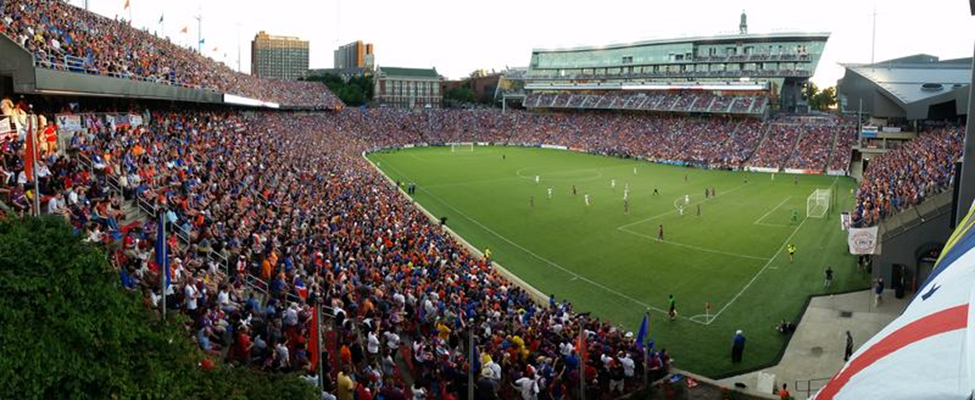
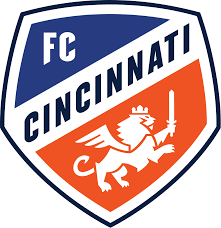
IV. Milwaukee Had Its Chance
In 2005, a group of Milwaukeeans got together to try and bring an MLS franchise to Milwaukee. Milwaukee is rich in cultural heritage and soccer tradition and has an incredible youth movement. Milwaukee’s attempts to bring an MLS team for a franchise fee of approximately $5 million and the costs of a stadium of approximately $50 million were not successful. The Milwaukee situation is best explained by Andrew Weiland in his article entitled “Soccer Stadium Planners Consider Site in Third Ward” published by the Small Business Times in 2006:
Can Milwaukee Professional Soccer LLC pull off its ambitious plans to build a massive mixed-use development, including a 20,000-seat soccer stadium, in downtown Milwaukee? We may find out this year if the company is for real. Their goal is to have a Major League Soccer (MLS) team playing in Milwaukee starting in 2008. To have the stadium built on time for the 2008 season, construction must begin by August this year, said Peter Wilt, chief executive officer of the company. Attorney Martin J. Greenberg, Milwaukee area businessman Rick Bergman and Milwaukee doctors James Mazzulla and Ashok Kumar formed Pegasus ParkEast Partners LLC to be the sole managing member of Milwaukee Professional Soccer LLC. They hired Wilt last year. He launched the Chicago Fire expansion team in 1998.
They have met with city officials, some of whom are taking their plans seriously. “I think soccer is a very interesting idea for Milwaukee,” said Alderman Robert Bauman, who represents the downtown area. “I actually think it’s feasible.” However, the group has a lot of work to do before construction of the soccer stadium can begin. They need to obtain: a 30-acre site in the downtown area, a commitment from MLS to grant Milwaukee an expansion team, more investors and city approval for the project. The group hopes to secure an option this spring with MLS to provide a team to Milwaukee. “The first quarter of 2006 is going to be critical for this project,” Wilt said.
The soccer stadium would only take up about eight of the 30 acres in the development, Wilt said. The rest of the property would be developed mostly with condominiums, but also with some office space and some retail space. Milwaukee Professional Soccer is working with Washington, D.C.-based Global Equity Partners LLC on the real estate development. The total cost of the project would be more than $500 million, Wilt said.
To put the project in perspective, it would have a more expensive development price tag than Miller Park or the now defunct PabstCity project.
The additional commercial and residential development is critical to financing construction of the stadium, Wilt said.
“Real estate is driving the project,” he said. “The revenue from the real estate is going to be used to underwrite the stadium. The stadium is almost a loss leader. Operating the team and the stadium will be profitable, but the debt service for (building) the stadium has to come from elsewhere.”
Milwaukee Professional Soccer knows that “elsewhere” cannot come from a new tax, such as the sales tax that was used to build Miller Park for the Milwaukee Brewers, Wilt said. There is no political support for another publicly financed sports stadium, said Department of City Development spokeswoman Andrea Rowe Richards.
Milwaukee Professional Soccer hopes a tax incremental financing (TIF) district could be used to fund the project. But, it would be a developer-financed TIF and not a city-financed TIF, Wilt said. A TIF may have political support, “if the TIF is supported privately so the city is not holding the bag,” Wilt said. “If it’s developer-financed there’d be considerably fewer obstacles,” Bauman said. As implied by the name of Pegasus ParkEast Partners, they originally wanted to build the stadium in the Park East freeway corridor. However, city officials balked at those plans.
“(City Planner Robert) Greenstreet and (Department of City Development Commissioner Rocky) Marcoux do not want a stadium on that land,” Wilt said. So, the group is looking for sites elsewhere downtown, which he declined to identify. Bauman said the group is looking at the parking area near the Italian Community Center and the Summerfest grounds in the Historic Third Ward. “We do have a preferred site we are talking to land owners and the city about,” Wilt said. “The biggest challenge is securing the site. We’re trying to secure a minimum of 30 acres. That’s a big chunk.” [119]
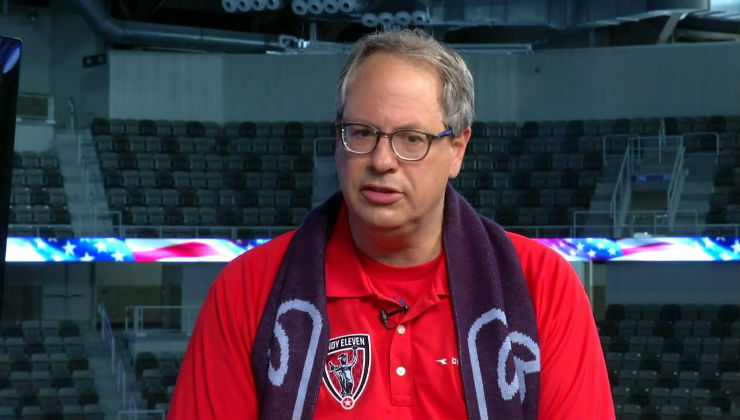
Unfortunately there was not the political will to find land and make appropriate incentives to bring MLS to Milwaukee. Unfortunately there were doubts as to whether or not soccer could be successful and the politicians were concerned about a new white elephant stadium. How wrong they were and how much of an opportunity Milwaukee missed which it may take years, if ever, to regain a position in the potential lineup of future MLS expansion sites.
V. Real Estate Development 
With Allianz Field as the centerpiece, the ownership of MNUFC foresees a hub of coordinated redevelopment activity in the surrounding “super block” constituting approximately 35-acres that is meant to house retail, residential, and bar/restaurant space.[120] The site currently includes the Midway Shopping Center and blighted vacant land.[121] The plan was first drawn up and approved by St. Paul City Council in 2016, which included a movie theater and hotel.[122] Mortenson Co., which served as general contractor for Allianz Field, was named as master developer of the super block site in 2018.[123]

While ownership has been slow thus far to implement much of its super block plan, the area surrounding the super block has anticipated the project’s completion, with the influx of foot traffic as a result of new residential and hospitality spaces going up.[124]
Just north of Snelling Avenue is a community of East African immigrants, many of whom are soccer enthusiasts, who reside in an area known colloquially as “Little Africa.”[125] Local vendors anticipate an increase in customers, drawing from across the Twin Cities as well as Little Africa, with the new stadium and the surrounding super block.[126] Bars line the north side of University Avenue where United fans can go for food and drinks. One of these is the Black Hart of St. Paul, a LGBTQ-friendly bar owned by a soccer podcaster who bought the place betting on the inundation of soccer fans the new stadium would bring.[127]
New residential buildings are being constructed, though there are concerns on the part of the Union Park District Council (UPDC) that locals are at risk of being “priced out” of the market by the new high-end market rate apartments.[128] Brandon Long, executive director of the UPDC is working with McGuire, co-owner of the MNUFC, and other developers to include affordable living spaces within the new buildings in an effort to promote a mixed-income community.[129] As of spring 2019, over 564 new multifamily housing units were either planned or under construction along a one mile stretch of Snelling Avenue south of Allianz Field.[130]
As for the super block itself, the crawling pace of development prior to March of 2020 has all but ground to a standstill with the advent of COVID-19.[131] The coronavirus has ensnared many businesses and projects across the U.S., and the Allianz Field’s super block is no exception. To date, the project has yet to break ground.[132] In a meeting with the UPDC, McGuire told the committee that he could not “see any funding for hotel/hospitality right now in the lenders” but that it could come back in 6 months.[133] He also cast doubt on the viability of the planned movie theater, questioning the viability of the industry post-COVID.[134]
McGuire still has some issues to work out with the City, as St. Paul owns a portion of the superblock property that used to function as a bus storage garage.[135] The City, as well as the UPDC, has been frustrated with the lack of specifics that McGuire and the rest of MNUFC ownership have been willing to share on the project, as no tenants have been named as of yet.[136] McGuire said in a December, 2019 land-use meeting with the UPDC that the “odds of (the site) looking exactly like the [2016] master plan are zero.”[137]
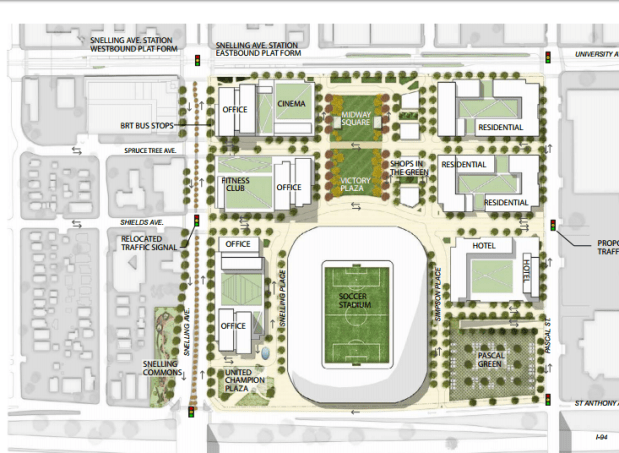
There is, however, some cause for optimism as McGuire still intends to break ground on a pair of apartment complexes this fall, with the target completion date in late spring of 2022.[138] It was stated in the article entitled Two housing-retail towers planned by Allianz Field in St. Paul, as an announcement by Ramsey County:
A planned real estate development next to Allianz Field in St. Paul’s Midway includes two towers composed of 234 housing units elevated over new retail and a “parking podium.” Restaurants and co-working spaces would be situated nearby in a third building.
A single layer of underground parking will serve the three buildings, which will be designed by stadium architect Populous.
The St. Paul Port Authority’s credit committee will discuss applying for up to $2 million in public environmental clean-up grants for the two-acre site at 1574 University Ave. West, which is technically the former address of the old Big Top Liquor store.
The two multi-family towers would include 234 housing units and nearly 16,000 square feet of retail space, sitting on top of 148,000 square feet of parking.
An adjacent block will host 19,000 square feet of retail and 30,000 square feet of co-working space in a three-level building. The alley between the two blocks will be “activated,” according to the Port Authority, with a mix of retail and “live-work” spaces.[139]

Even without the super block project, over 500,000 people came through the neighborhood in 2019 because of the redevelopment of the area.[140] That number only stands to rise once a sense of normalcy returns and the project regains investors and tenants.
In the center of the super block is the Great Lawn Park, an expansive green space just north of the stadium, which features over 20,000 square feet of grass, to be fed by a state-of-the-art water capture system on the roof of Allianz Field.[141] Rainwater is stored in massive tanks held in the stadium and is able to pump out 2 million gallons per year.[142] Tree trenches line the sides of the greenspace, which organically clean the rainwater before it travels downstream.[143] Delaware North, the concessions vendor for Allianz Field, recently applied to have their liquor license extended to cover the Great Lawn Park, marking the beginnings of a vibrant entertainment district.[144]
VI. Conclusion
It is obvious in reviewing the history of the United that soccer in Minnesota has carved out its place and is on the rise. There is a similar held belief that soccer in the United States has done likewise. Stories similar to Minnesota’s have taken place in other cities, notably in Portland and Seattle, considered to be two of the best franchises in MLS.[145] The MLS continues to expand, adding four new franchises in Austin FC (2021), Charlotte (2022), Sacramento Republic FC and St. Louis (2023).[146] It is unclear how many more teams MLS may add but some cities with other major professional teams already seem ready to take advantage if that occurs. It is easy to see now why Milwaukee could have lost a golden opportunity in not investing into an MLS franchise years ago.
Thank you to Karl Vogel for starting this piece way back in 2018. Thank you to Andrew Mentzer for continuing work and revisions of this article in 2018/2019. And thank you to Kylan Reilly for continuing revisions and helping to bringing this article to fruition in 2020.
Thank you to my legal assistant, Danelle Welzig, for her editing and writing skills.
[1] Megan Ryan, A field guide to Minnesota United’s first MLS Season, StarTribune (Mar. 2, 2017), http://www.startribune.com/a-field-guide-to-minnesota-united-s-first-mls-season/413594053/.
[2] MLS Standings, MLS (Oct. 25, 2019), https://www.mlssoccer.com/standings.
[3] Jerry Zgoda, Minnesota United bows out of MLS playoffs with 2-1 loss to L.A. Galaxy, Star Tribune (Oct. 21, 2019),
https://www.startribune.com/minnesota-united-bows-out-of-mls-playoffs-with-2-1-loss-to-l-a-galaxy/563520652/.
[4] Steve Holryod, The Year in American Soccer – 1976, American Soccer History Archives (May 28, 2016) http://homepages.sover.net/~spectrum/year/1976.html.
[5] Minnesota Kicks (Soccer Team), Minnesota Historical Society, http://www2.mnhs.org/library/findaids/00810.xml (last visited April 4, 2018).
[6] Holryod supra 1; Steve Holryod, The Year in American Soccer – 1977, American Soccer History Archives (May 28, 2016) http://homepages.sover.net/~spectrum/year/1977.html; Steve Holryod, The Year in American Soccer – 1978, American Soccer History Archives (May 28, 2016) http://homepages.sover.net/~spectrum/year/1978.html; Steve Holryod, The Year in American Soccer – 1979, American Soccer History Archives (May 28, 2016) http://homepages.sover.net/~spectrum/year/1979.html; Steve Holryod, The Year in American Soccer – 1980, American Soccer History Archives (May 28, 2016) http://homepages.sover.net/~spectrum/year/1980.html; Steve Holryod, The Year in American Soccer – 1981, American Soccer History Archives (May 28, 2016) http://homepages.sover.net/~spectrum/year/1981.html.
[7] Brian Quarstad, Minnesota: A Rich Soccer History, Fifty Five One (Apr. 16, 2015), https://fiftyfive.one/2015/04/minnesota-rich-soccer-history/.
[8] Id.
[9] Id.
[10] Id.
[11] Andrew Wiebe, MLS made in Minnesota: Past, present & future of soccer in the Twin Cities, MNUFC (March 10, 2017), https://www.mnufc.com/post/2017/03/10/mls-made-minnesota-past-present-future-soccer-twin-cities.
[12]Id.
[13] Id.
[14] Id.
[15] Id.
[16] Quarstad supra 7.
[17] Id.
[18] Wiebe supra 11.
[19] Id.
[20] Wiebe supra 11.
[21] Andrew Greder, How the “team no one wanted” found its way to the MLS, Twin Cities Pioneer Press (Aug. 18, 2016), https://www.twincities.com/2016/08/18/minnesota-soccer-history-the-team-that-nobody-wanted-is-going-to-mls/.
[22] Id.
[23] Id.
[24] Id,
[25] NSC Stadium, National Sports Center, https://www.nscsports.org/page/show/1551577-national-sports-center-stadium (last visited April 5, 2018).
[26] Id.
[27] History, 2011 Review, NASL (Sept. 28, 2011), http://www.nasl.com/a-yearly-review-of-2011.
[28] Greder supra 21.
[29] Id.
[30] NASL supra 27.
[31] Id.
[32] Id.
[33] Id.
[34] Id.
[35] International Directory of Company Histories, Vol. 9 St. James Press (1994), http://www.fundinguniverse.com/company-histories/united-healthcare-corporation-history/.
[36] The 400 Richest Americans, Forbes (Sept. 21, 2006), https:www.forbes.com/lists/2006/bak/biz_06rich400_William-W-McGuire_RI3M.html.
[37] Id
[38] Id.
[39] International Directory of Company Histories supra note 35.
[40] Id.
[41] Id.
[42] Id.
[43] Brad Surcey, Minnesota United FC joins MLS, Zeus Jones (Mar. 25, 2015), https://zeusjones.com/thoughts/minnesota-united-fc-joins-mls.
[44] Id.
[45] Id.
[46] Andy Mannix, Minnesota Stars change names to “Minnesota United FC”, City Pages (Mar. 23, 2013), http://www.citypages.com/news/minnesota-stars-change-name-to-minnesota-united-fc-6542958.
[47] Id.
[48] Mike Kaszuba, Looking at the ownership structure of Minnesota United, Public Records Media (Feb. 8, 2017), http://www.publicrecordmedia.org/looking-at-the-ownership-structure-of-minnesota-united/.
[49] Id.
[50] Id.
[51] Forbes, https://www/forbes.com/profile/glen-taylor/#43328b17719b.
[52] Front Office Directory, MLB https://www.mlb.com/twins/team/front-office/jim-pohlad.
[53] Id.
[54] Wendy Nelson Carlson Biography, Carlson.com, http://carlson.com/sites/default/files/2017-11/Wendy%20Nelson%20bio.pdf
[55] Id.
[56] Ian Thomas, Minnesota United ownership group has local titans, Sports Business Journal (Apr. 22, 2019), https://www.sportsbusinessdaily.com/Journal/Issues/2019/04/22/Facilities/MUFC.aspx.
[57] Id.
[58] Associated Press, MLS expansion into Canada looks like a bargain with fees pegged at $150 million for next set of teams, National Post (Dec. 16, 2016), https://nationalpost.com/sports/soccer/mls-expansion-into-canada-looks-like-a-bargain-with-fees-pegged-at-150-million-for-next-set-of-teams
[59] AP, MLS to expand to 28 teams with higher entry fee, USA Today (Dec. 16, 2016), https://www.usatoday.com/story/sports/mls/2016/12/16/mls-to-expand-to-28-teams-with-150m-entry-fee-for-newcomers/95511822/.
[60] Id.
[61] Id.
[62] Id.
[63] Mike Kaszuba and Dennis Brackin, MLS to make ‘major announcement’ Wednesday at Target Field, Star Tribune (Mar. 24, 2015), https://www.startribune.com/mls-expected-to-announce-deal-to-add-minnesota-expansion-team/297249431/
[64] Id.
[65] Frederick Melo, Ramsey County approves St. Paul soccer stadium resolution, Twin Cities Pioneer Press (Oct. 25, 2015), https://www.twincities.com/2015/09/07/ramsey-county-approves-st-paul-soccer-stadium-resolution/
[66] Jane McClure, Developer named for 25 acres around Allianz Field Stadium, Monitor St. Paul (June 11, 2018), monitorsaintpaul.com/developer-named-for-25-acres-around-allianz-field-stadium/.
[67] Id.
[68] Id.
[69] MLSsoccer staff, Minnesota United FC announce plan for new St. Paul stadium, MLSsoccer.com (Oct.23, 2015), www.mlssoccer.com/post/2015/10/23/minnesota-united-fc-announce-plan-new-st-paul-stadium.
[70] MNUFC Club History, mnufc.com/club/history.
[71] Transportation, MNUFC (Last updated Oct. 30, 2019), https://www.mnufc.com/stadium/transportation
[72] Andy Greder, State Tax Breaks Approved for St. Paul Soccer Stadium, Twin Cities Pioneer Press, May 30, 2017, https://www.twincities.com/2017/05/30/united-soccer-third-try-is-a-charm-for-state-tax-breaks-to-help-build-stadium-legislature-minnesota/.
[73] Zach Walker, How much did Allianz Field cost? How big is it? Here are the numbers on St. Paul’s stadium, TwinCities (Apr. 7, 2019), https://www.twincities.com/2019/04/07/how-much-did-allianz-field-cost-how-big-is-it-here-are-the-numbers-on-st-pauls-new-stadium/.
[74] Id.; Andy Greder, Allianz Field is a year away from completion. Here’s a look inside., Pioneer Press (Feb. 25, 2018), https://www.twincities.com/2018/02/22/one-year-to-go-for-allianz-field-minnesota-uniteds-200-million-soccer-pitch/
[75] Greder supra 71.
[76] Id.
[77] Id.
[78] Id.
[79] Stephanie E. Cangialosi, Property Tax Post: Some Sports Stadiums Are Sacking Property Tax, Bloomberg Tax (Sept. 28, 2017), https://www.bna.com/property-tax-post-b73014470258/.
[80] Greder supra 71.
[81] Minnestoa United FC, Target Becomes Official Partner and Kit Sponsor, MNUFC.com (Jan. 19, 2017), www.mnufc.com;post/2017/01/19/target-becomes-official-partner-and-kit-sponsor; Press Release, Allianz and Minnesota United FC announce naming rights partnership for new soccer stadium, Allianz.com (Jul. 25, 2017)
[82] MLS soccer staff, Target Becomes Official MLS Partner, Lands Minnesota United Jersey Front, MLS (Jan. 19, 2017) https://www.mlssoccer.com/post/2017/01/19/target-becomes-official-mls-partner-lands-minnesota-united-jersey-front.
[83] Id.
[84] Id.
[85] Gail Kalinoski, Allianz Secures Naming Rights for MLS Stadium, Commercial Property Executive (July 27, 2017) https://www.cpexecutive.com/post/allianz-secures-naming-rights-for-mls-stadium/.
[86] Id.
[87] Bayern’s Home, Bayern Munich FC, https://fcbayern.com/en/club/allianz-arena (last visited April 5, 2018).
[88] MNUFC & Allianz Field, Minnesota United (July 25, 2017), https://www.mnufc.com/es/post/2017/07/25/mnufc-allianz-field.
[89] Alicia DelGallo, Orlando City Close to Announcing Stadium Naming Rights, Orlando Sentinel, Jan. 2, 2017, http://www.orlandosentinel.com/sports/orlando-city-lions/on-the-pitch/os-orlando-city-in-final-negotiations-over-stadium-naming-rights-20170102-story.html.
[90] Press Kit, https://www.mnufc.com/news/press-kit.
[91] Pat Borzi, ‘As good as anywhere in the world’: The debut of Allianz Field ushers in a new era for Minnesota United. And for soccer in Minnesota, Minnesota Post (Apr. 12, 2019), www.minnpost.com/sports/2019/04/as-good-as-anywhere-in-the-world-the-debut-of-allianz-field-ushers-in-a-new-era-for-minnesota-united-and-for-soccer-in-minnesota/
[92] Minnesota United supra 87.
[93] Id.
[94] Id.
[95] Id.
[96] MNUFC & Allianz Field, Minnesota United (last visited Dec. 12, 2019), https://www.mnufc.com/stadium/renderings.
[97] Id.
[98] Id.
[99] Id.
[100] Bayern supra 76.
[101] Minnesota United supra 77.
[102] Id; Orlando City SC, Supporter Section (last visited Dec. 12, 2019) https://www.orlandocitysc.com/stadium/supporters.
[103] Minnesota United supra 77.
[104] Id.
[105] MNUFC, Supporter Groups (last visited Dec. 12, 2019), https://www.mnufc.com/fans/supporters
[106] Id.
[107] Staff, Allianz Field by the Numbers, Special Advertising Section, Sports Business Journal, April 15-21, 2019.
[108] Adam Uren, Allianz Field is ‘best stadium experience’ in MLS, according to ESPN, Bring Me The News, Aug 23, 2019,
https://bringmethenews.com/minnesota-sports/allianz-field-is-best-stadium-experience-in-mls-according-to-espn
[109] Jillian Sakovitz, Brew Hall to Bluegrass: 10 Things About Minnesota United’s Allianz Field, MLSSoccer.com, Apr. 8, 2019, https://www.mlssoccer.com/post/2019/04/08/brew-hall-bluegrass-10-things-about-minnesota-uniteds-allianz-field
[110] Andy Greber, Is Allianz Field too small? MLS Commissioner Don Garber think so, TwinCities (Apr. 14, 2019), https://twincities.com/2019/04/14/is-allianz-field-too-small-mls-commissioner-don-garber-thinks-so/.
[111] Id.
[112] Id.
[113] Id.
[114] Id.
[115] Staff, 2019 MLS Attendance, Soccer Stadium Digest, Oct. 6, 2019, https://soccerstadiumdigest.com/2019-mls-attendance/.
[116] MLS Soccer Staff, Cincinnati warded MLS expansion club, will start play in 2019, MLS (May 29, 2018), https://www.mlssoccer.com/post/2018/05/29/fc-cincinnati-named-26th-mls-team-starting-play-2019.
[117] Id.
[118] Steve Watkins, Here’s where FC Cincinnati’s attendance ranked in its first MLS season, BizJournal (Oct. 7, 2019), https://www.bizjournals.com/cincinnati/news/2019/10/07/here-s-where-fc-cincinnati-s-attendance-ranked-in.html.
[119] Andrew Weiland, Soccer Stadium Planners Consider Site in Third Ward, Small Business Times (2006), https://www.bigsoccer.com/threads/soccer-stadium-planners-consider-site-in-third-ward.287184/
[120] Frederick Melo, Allianz Field is just the beginning. Here’s what’s happening – and hoped for – around St. Paul’s new soccer stadium, Pioneer Press (April 7, 2019), https://www.twincities.com/2019/04/07/allianz-field-is-just-the-beginning-heres-whats-happening-and-hoped-for-around-st-pauls-new-soccer-stadium/.
[121] St. Paul Government, Snelling-Midway Redelvelopment Site, I https://www.stpaul.gov/departments/planning-economic-development/planning/snelling-midway-redevelopment-site
[122] Melo, Supra note 120.
[123] Jane McClure, Developer named for 25 acres around Allianz Field stadium, Monitor Saint Paul (June 11, 2018), http://monitorsaintpaul.com/developer-named-for-25-acres-around-allianz-field-stadium/#:~:text=Changes%20great%20and%20small%20are,of%20the%20Midway%20Center%20property.
[124] Melo, Supra note 120.
[125] Id.
[126] Id.
[127] Id.
[128] Id.
[129] Id.
[130] Brian Johnson, Housing heats up near Allianz Field, Finance & Commerce (April 10, 2019), https://finance-commerce.com/2019/04/housing-heats-up-near-allianz-field/.
[131] Jay Kolls, COVID-19 slows massive ‘super block’ redevelopment at Allianz Field; project still expected to start this fall, KSTP-TV (May 10, 2020), https://kstp.com/minnesota-news/covid-19-slows-massive-super-block-redevelopment-at-allianz-field/5725996/.
[132] Id.
[133] Id.
[134] Id.
[135] Jane McClure, Developer plan at ‘superblock’ evolving, Monitor Saint Paul (February 10, 2020), http://monitorsaintpaul.com/development-plan-at-superblock-evolving/.
[136] Id.
[137] Id.
[138] Id.
[139] Frederick Melo, Two housing-retail towers planned by Allianz Field in St. Paul, Pioneer Press, Apr. 21, 2020, https://www.twincities.com/2020/04/20/two-housing-retail-towers-planned-by-allianz-field-in-st-paul/.
[140] McClure, supra Note 135.
[141] Allianz Field: Get to Know the Greenspace, Minnesota United FC (January 30, 2019), https://www.mnufc.com/post/2019/01/30/allianz-field-get-know-greenspace.
[142] Id.
[143] Id.
[144] McClure, supra Note 135.
[145] Timbers Soccer History, Portland Timbers (last visited Dec. 12, 2019), https://www.timbers.com/club/timbers-soccer-history; LikkitP, Know your history: the 40 years of Sounders edition, SB Nation (Feb. 4, 2014), https://www.sounderatheart.com/2014/2/4/5338390/know-your-history-the-40-years-of-sounders-edition
[146] Jabari Young, Major League Soccer to delay debuts of 3 expansion franchises due to coronavirus, CNBC, Jul. 17, 2020, https://www.cnbc.com/2020/07/17/mls-to-delay-debuts-of-3-expansion-franchises-due-to-coronavirus.html.


